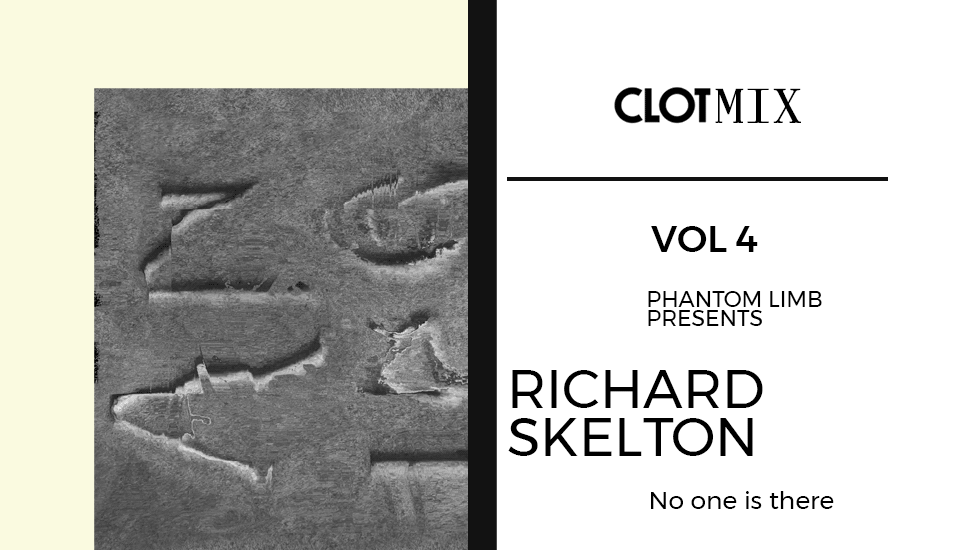Text by CLOT Magazine

For our 4th instalment, Richard Skelton and Phantom Limb Publishing are bringing us a psychogeographical mix. British musician and sound artist Richard Skelton has been exploring the natural world, its cycles of life and decay and our relationship with landscape and human-constructed spaces with experimental atmospheres. Skelton has just published his latest album, Border Ballads (Corble Stone Press). After spending the last two years living in the rural northern edge of the Scotland-England border, a boundary demarcated by various watercourses, this hinterland topography has informed a series of musical recordings, twelve miniatures fragments of a larger whole, such is their unity in tone and timbre.
For this mix, Skelton shares that this mix is loosely constructed around absences, vacancies and dereliction. The image of a deserted church, now falling into disrepair, is located deep in the north Cumbrian interior. I pass by the building on a regular basis as I traverse the labyrinthine back roads between Scotland and England. Fittingly, therefore, all the music in this mix is sourced from vinyl — the ever-present sound of cracks and pops attesting to a kind of degraded materiality.
Perhaps predictably, the first recording that came to mind was Nico’s ‘No One Is There’ — a favourite song with a haunting melody, and my selection moved out from there, looking for records that had similar resonances, regardless of their provenance or genre. I was therefore interested to discover overlaps between the Baroque inflections of Boismortier’s ‘Concerto for 5 Tenor Recorders’ and the synthetic swells of Vainqueur’s ‘Elevation’, or the howling sonorities of Gareth Davis’ clarinet and Jandek’s cracked harmonica.
The whole mix is held together by the rich field recordings of Joshua Bonnetta’s ‘What Lies in It’, which itself is a document of a Californian ghost resort, Salton Sea. In turn, various segues are made with Alan Lomax’s recordings of human voices, many of which crackle and blur with their own disintegrating physicality. These are various documents of (primarily North American) languages and dialects: Blood (00:50), Stoney (07:50), Beaver (17:48), English (25:45 & 36:00), Achumawi (48:45) and Nenet (54:05). Given this proliferation of languages, in the end, Nico herself has gone — vanishing through the cracks in her own song to leave only its refrain, looping eternally.






